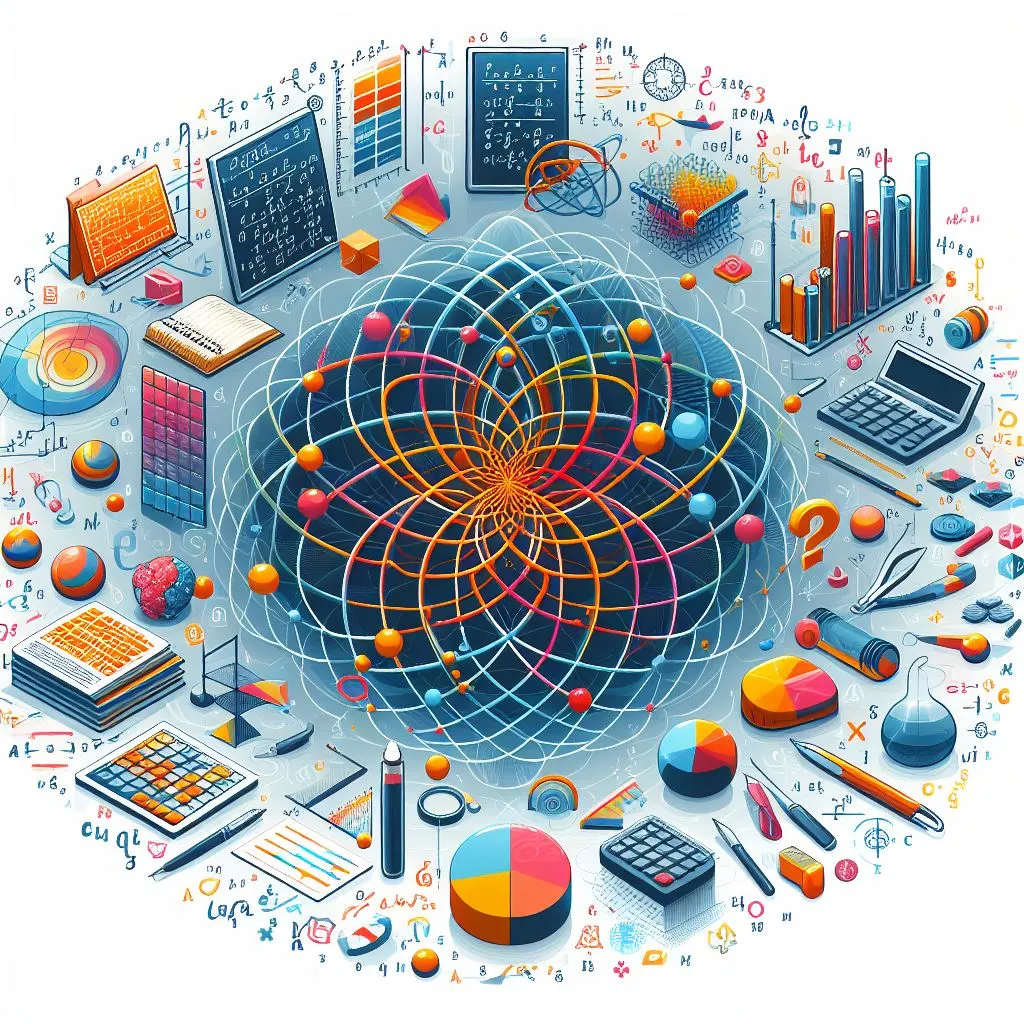Applications of Complex Analysis in Real Life: A Practical Perspective

Complex analysis, a branch of mathematics that explores the properties and behaviors of complex numbers and functions, may seem abstract and theoretical at first glance. However, its applications extend far beyond the realm of pure mathematics and find practical use in various fields. In this comprehensive blog, we will delve into the practical applications of complex analysis in real life, shedding light on how these mathematical concepts play a crucial role in solving practical problems. Electrical engineering leverages complex numbers for analyzing alternating current (AC) circuits, with impedance calculations allowing engineers to predict and optimize electronic system behaviors. In signal processing, essential to audio and communication systems, complex analysis underlies Fourier transforms, enabling the efficient manipulation of signals for applications in audio processing and image compression. The fluid dynamics and aerodynamics sectors benefit from complex analysis, as it aids in understanding and modeling intricate fluid flow patterns. In aerodynamics, complex functions contribute to the analysis of airfoil shapes, predicting lift and drag forces, and optimizing aircraft designs, showcasing the direct impact of complex analysis on aerospace efficiency and safety. If you need help with your complex analysis assignment, this blog offers insights into its practical applications, demonstrating how mathematical concepts are utilized in real-world scenarios across various industries.

Furthermore, in hydrodynamics, complex analysis assists in predicting wave patterns, optimizing water distribution systems, and enhancing the performance of turbines in hydropower plants. The quantum realm, known for its intricate phenomena, relies on complex analysis in quantum mechanics and quantum computing. Wave functions and Schrödinger's equation, both central to quantum mechanics, involve complex numbers, with applications ranging from describing quantum states to the development of quantum algorithms for quantum computing and cryptography. In economics and finance, complex analysis contributes to financial mathematics, facilitating options pricing, risk management, and portfolio optimization, empowering investors with tools to make informed decisions and manage risks effectively. Economic modeling benefits from the dynamic insights provided by complex analysis, enabling economists to understand interconnected economic systems and formulate predictive models for economic forecasting and policy development. Embracing the practical perspective of complex analysis enhances our ability to analyze and predict real-world phenomena across diverse fields, driving innovations and shaping the technological landscape of the future. As we advance in science and technology, the importance of complex analysis is bound to grow, further enriching our understanding of the intricacies of the world around us and pushing the boundaries of what is achievable in various domains.
Understanding Complex Numbers:
Understanding complex numbers is foundational to unlocking the vast applications of complex analysis in various fields. A complex number is expressed in the form a + bi, where 'a' and 'b' are real numbers, and 'i' represents the imaginary unit, the square root of -1. Despite their seemingly abstract nature, complex numbers play a pivotal role in practical applications, particularly in electrical engineering. In the realm of AC circuits, complex numbers are employed to represent impedance, enabling engineers to analyze and predict the behavior of intricate electrical systems. Moreover, the significance of complex analysis extends into signal processing, where Fourier transforms utilize complex numbers to decompose signals into frequency components, facilitating efficient data transmission in diverse fields such as audio processing and communication systems. Beyond electronics, complex analysis is indispensable in fluid dynamics, aiding in the understanding of fluid flow in both aerodynamics and hydrodynamics. In aerodynamics, complex functions contribute to the analysis of airfoil shapes and the optimization of wing designs, directly impacting the efficiency and safety of aircraft. In hydrodynamics, complex analysis helps model fluid behavior, guiding the design of water distribution systems, predicting flood patterns, and optimizing hydropower plant performance. The practical implications of understanding complex numbers are further underscored in the fields of quantum mechanics and quantum computing, economics, and finance, where complex analysis proves instrumental in unraveling complex phenomena and guiding decision-making processes. As we delve deeper into the applications of complex analysis, it becomes evident that a solid grasp of complex numbers opens doors to a myriad of practical solutions across diverse disciplines.
1. Electrical Engineering:
Complex numbers find extensive applications in electrical engineering, particularly in the analysis of alternating current (AC) circuits. The impedance of a circuit element, such as a resistor, inductor, or capacitor, is represented using complex numbers. This allows engineers to calculate and predict the behavior of complex electrical systems, facilitating the design and optimization of electronic devices.
2. Signal Processing:
In signal processing, complex analysis is indispensable for understanding and manipulating signals. Fourier transforms, which decompose a signal into its frequency components, heavily rely on complex numbers. Engineers use these techniques in audio processing, image compression, and communication systems, enabling the efficient transmission and reception of information.
Fluid Dynamics and Aerodynamics:
In the intricate realms of fluid dynamics and aerodynamics, where the behavior of liquids and gases is scrutinized for practical applications, complex analysis emerges as an indispensable tool. Within the domain of aerodynamics, the principles of complex analysis play a pivotal role in deciphering the complexities of airflow around various objects. Aircraft design, in particular, relies heavily on these mathematical concepts, employing complex functions like potential flow theory and conformal mapping to analyze airfoil shapes, predict lift and drag forces, and optimize wing designs. The aerospace industry benefits significantly from these applications, enhancing the efficiency and safety of airborne vehicles. In the context of fluid dynamics, whether dealing with water flow in civil engineering projects or the study of ocean currents, complex analysis aids in modeling and predicting fluid behavior. Civil engineers harness these insights for designing water distribution systems, predicting flood patterns, and optimizing the performance of turbines in hydropower plants. The nuanced understanding provided by complex analysis proves instrumental in tackling real-world challenges posed by fluid systems, contributing to advancements in technology and the development of sustainable solutions. In essence, the applications of complex analysis in fluid dynamics and aerodynamics not only deepen our comprehension of natural phenomena but also empower engineers and scientists to innovate and optimize systems crucial to our daily lives.
1. Aerodynamics:
Aircraft design and performance analysis heavily depend on the principles of complex analysis. Complex functions, such as potential flow theory and conformal mapping, aid in analyzing airfoil shapes, predicting lift and drag forces, and optimizing wing designs. This has direct applications in the aerospace industry, contributing to the efficiency and safety of aircraft.
2. Hydrodynamics:
In the realm of fluid dynamics, complex analysis helps model the behavior of fluids, predict wave patterns, and understand the dynamics of water flow. Civil engineers use these insights in designing efficient water distribution systems, predicting flood patterns, and optimizing the performance of turbines in hydropower plants.
Quantum Mechanics and Quantum Computing:
In the intricate realm of Quantum Mechanics and Quantum Computing, complex analysis serves as a foundational tool for unraveling the mysteries of the quantum world. Quantum mechanics, which describes the behavior of particles on the smallest scales, relies heavily on complex numbers. Wave functions, representing the quantum states of particles, are inherently complex-valued, and the mathematical framework underpinning quantum mechanics often involves solving complex differential equations. Schrödinger's equation, a linchpin in quantum mechanics, encapsulates the evolution of quantum states over time and exemplifies the pervasive role of complex numbers in this domain. Beyond theoretical underpinnings, complex analysis plays a pivotal role in the burgeoning field of Quantum Computing. Quantum algorithms, such as Shor's algorithm for integer factorization and Grover's search algorithm, leverage the power of complex numbers and quantum parallelism to outperform classical algorithms in certain computational tasks. Quantum gates, the building blocks of quantum circuits, often manipulate complex-valued probability amplitudes. As researchers and engineers strive to harness the potential of quantum computers for solving complex problems, the synergy between complex analysis and quantum mechanics becomes increasingly evident. The marriage of these disciplines not only propels the development of groundbreaking technologies but also reshapes our understanding of computation, opening new frontiers in the quest for quantum supremacy and revolutionizing the landscape of information processing in ways previously deemed impossible by classical means.
1. Quantum Mechanics:
Wave functions, fundamental to the description of quantum states, are often complex-valued. Schrödinger's equation, a cornerstone of quantum mechanics, involves complex numbers and solutions. The understanding and manipulation of quantum states are crucial for advancements in technologies such as quantum computing and quantum cryptography.
2. Quantum Computing:
Quantum algorithms, designed to operate on quantum computers, utilize complex numbers for quantum parallelism and superposition. Complex analysis is integral to the development of quantum algorithms that outperform classical counterparts in specific problem domains, promising revolutionary advancements in computation.
Economics and Finance:
In the realm of economics and finance, the applications of complex analysis offer indispensable insights and tools for comprehending the intricate dynamics of financial systems. Financial mathematics relies heavily on complex analysis, employing stochastic calculus and Fourier analysis to develop advanced models for options pricing, risk management, and portfolio optimization. These models, grounded in complex numbers and functions, empower investors to make informed decisions, navigate volatile markets, and strategically optimize their investment portfolios. Economic modeling, too, benefits from the application of complex analysis as economists strive to understand the complex interplay of factors such as inflation, interest rates, and market behaviors. By utilizing predictive models rooted in complex mathematics, economists can contribute to economic forecasting and policymaking, enabling more effective responses to dynamic economic environments. The practical integration of complex analysis in economics and finance not only enhances our ability to model and predict financial phenomena but also fosters innovation and resilience in the face of evolving economic landscapes. As financial markets become increasingly sophisticated and interconnected, the role of complex analysis continues to be paramount, shaping the strategies that drive economic growth and stability. In essence, the applications of complex analysis in economics and finance exemplify the transformative impact that mathematical rigor can have on our understanding and management of complex real-world systems.
1. Financial Mathematics:
Options pricing, risk management, and portfolio optimization involve intricate mathematical modeling. Complex analysis techniques, such as stochastic calculus and Fourier analysis, are employed to develop sophisticated financial models. These models help investors make informed decisions, manage risks, and optimize their investment strategies.
2. Economic Modeling:
Economic systems are dynamic and interconnected. Complex analysis aids economists in modeling these complex systems, incorporating factors like inflation, interest rates, and market behaviors. Predictive models based on complex analysis contribute to economic forecasting and policy formulation.
Conclusion:
In conclusion, the applications of complex analysis in real life underscore its profound impact across diverse domains. From the intricate realms of electrical engineering, where it facilitates the analysis of AC circuits, to the dynamic landscapes of fluid dynamics and aerodynamics, where it aids in optimizing aircraft designs and predicting fluid behaviors, complex analysis proves to be an indispensable tool. Quantum mechanics and quantum computing benefit from its application, driving advancements in technologies that promise to redefine the limits of computation. In the fields of economics and finance, complex analysis contributes to the development of sophisticated models, empowering investors and economists to make informed decisions and navigate the complexities of dynamic economic systems. This exploration has revealed that complex analysis is not merely an abstract mathematical concept but a practical and transformative force, shaping the way we understand and interact with the world. As we continue to unravel the intricacies of natural phenomena and push the boundaries of technological innovation, the significance of complex analysis is poised to grow, solidifying its place as a cornerstone in the quest for knowledge and progress across various disciplines. Ultimately, the practical perspective of complex analysis serves as a testament to the enduring relevance of mathematical principles in addressing real-world challenges and driving innovation in the pursuit of a more informed and interconnected global society.